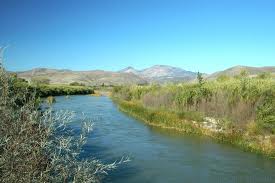World Food Day: Hunger is a Matter of Food Access, Even at Home
By Laurie Greene, California Ag Today Editor
“It is encouraging to see World Food Day observed today, a designation made possible by the inspiring work of the Food and Agriculture Organization of the United Nations,” says California Department of Food and Agriculture Secretary Karen Ross in a statement released TODAY.
The goal of World Food Day is to eradicate hunger. Ross explains the world produces enough food to feed everyone; the ongoing problem is food access.
Globally, reports University of California, Davis, over 800 million people today suffer from malnutrition and hunger, nearly 15.9 million children in the U.S. struggle daily to get proper nutrition and approximately 18% of residents in this region lack regular access to food. Ross states, “In California, almost four million people are food insecure; they could not afford enough food at least once in the previous year.
CDFA addresses access issues daily through its programs. Ross explains that CDFA’s Certified Farmers’ Market program has helped increase the number of markets statewide, providing communities with fresh, nutritious food directly from farms. Many of them now accept CalFresh cards used by California’s low-income families to obtain nutritious food. Likewise, CDFA’s Senior Farmers Market Nutrition Program helps provide these foods to needy senior citizens.
CDFA’s Office of Farm to Fork connects school districts with local farmers and also helps teachers provide quality nutrition education to their students. Ross says, “I was very pleased to see these efforts play a role in bringing a truly exceptional honor this week to a group of Contra Costa County students – they were invited to the White House garden to meet First Lady Michelle Obama and help harvest vegetables for the White House kitchen!”
CDFA’s Specialty Crop Block Grant Program provides USDA Farm Bill funds, nearly $20 million in 2014, through a competitive grant process for some specialty crops projects. Projects includ programs in Chico and Sacramento to improve access through community gardens for low-income residents and educational opportunities in both nutrition and urban production.
The California State Board of Food and Agriculture and CDFA collaborate to generate donations to state food banks. “We declare each December as Farm-to-Food Bank Month,” Ross comments, “and ask our farmers and ranchers to make a donation or a pledge.” Last year, donations exceeded 127 million pounds of food, and this year’s goal is 200 million pounds.
Ross continues, “We want to thank our partners at California Grown for its commitment to the food bank effort with its “Snap a Selfie” Program.” California Grown donates a pound of food to California food banks for every #cagrown selfie—a photograph of the CA Grown logo or anything grown or produced in California and is posted with ‘#cagrown’ in the posting on Instagram, Twitter or Facebook by end of this month.
The Food and Agriculture Organization of the United Nations established World Food Day on October 16, 1981, the anniversary of the organization’s founding in 1945.
The 2014 World Food Day theme – Family Farming: “Feeding the world, caring for the earth” – has been chosen to raise the profile of family farming and smallholder farmers. World attention will focus on the significant role of family farming in eradicating hunger and poverty, providing food security and nutrition, improving livelihoods, managing natural resources, protecting the environment, and achieving sustainable development, in particular in rural areas.
The UN General Assembly has designated 2014 “International Year of Family Farming.” This is a strong signal that the international community recognizes the important contribution of family farmers to world food security.
Eight days after World Food Day, held every October 24th, “Food Day” organized by the Washington, D.C.-based, nonprofit Center for Science in the Public Interest (CSPI), aims to unite Americans to celebrate and enjoy real food and to push for improved food policies. “Real Food, Just Food”is the 2014 slogan.
Sources: CDFA, UC Davis Dateline, FAO of the UN, CSPI



















